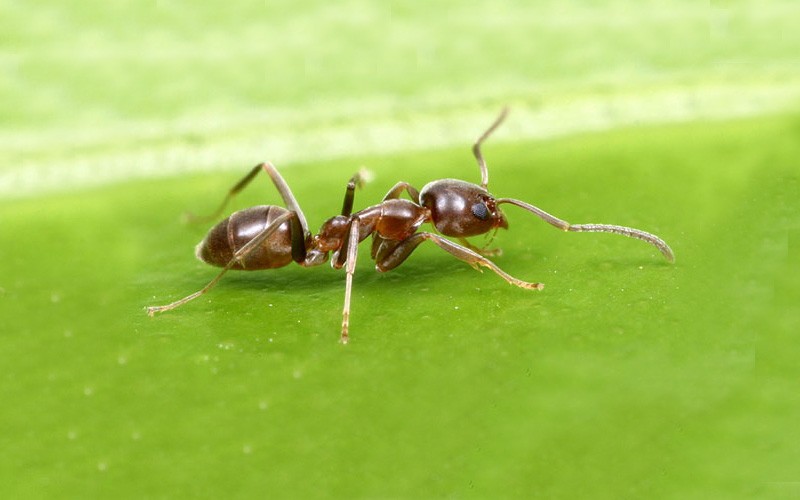Some biting pests such as mosquitoes, fleas and ticks are most active during the warmer months. Others, like bed bugs, are active year round but become a larger concern with increased summer travel. Mosquitoes, fleas, ticks and bed bugs don’t bite out of self-defense. No, they’re biting you to get their next blood meal. And, while some biting insects merely cause itchy welts on the skin, others pose more serious health threats. Use this guide to learn everything there is to know about common biting pests.
Mosquitoes
Overview: Mosquitoes are one of the best-known summer pests because of their pesky nature. They are mostly brown, gray, or black and typically have white, silver, green or iridescent blue scales.
Habitat: Mosquitoes need water to breed, so they are often found near water source of all sizes – from ponds and marshes to the bird bathes in our own backyards.
Threats: Mosquitoes are known to bite humans, leaving red, itchy bumps on the skin. They are also vectors of many serious and potentially fatal diseases in Southern Africa, such as West Nile virus, eastern equine encephalitis and dengue fever. Worldwide, mosquitoes have been implicated in the spread of yellow fever, malaria and Chikungunya virus.
Prevention Tip: Eliminate mosquito breeding grounds on the property by draining standing water from flowerpots, birdbaths, grill covers, baby pools and other sources.
Unique Fact: Only female mosquitoes bite and feed on humans. They hunt for food by detecting body heat and the carbon dioxide we exhale.
Fleas

Overview: Fleas are parasites which feed on the blood of any warm-blooded host. The most common type of flea is the cat flea, which often feasts on cats, dogs and humans. Most fleas are dark reddish-brown in color and range in size from 2.1mm to 4.2mm long.
Habitat: Fleas transport themselves on household pets, rodents and wild animals. Adult cat fleas usually remain on their hosts at all times, though this isn’t true for all flea species.
Threats: Fleas are known to bite their host, which often results in painful, itchy red bumps. Their saliva can also cause serious flea allergy dermatitis in pets. Most alarming, though, is that fleas have been implicated in the spread of disease – from the rare bubonic plague to the bacterial disease murine typhus, and serve as intermediate hosts for tapeworms.
Prevention Tip: Protect family pets by practicing active flea management, which includes bathing and grooming them regularly, visiting a veterinarian annually and using a flea treatment during the warm months.
Unique Fact: Fleas can jump up to 8 inches high, or 150 times their own height. If humans could do this, we would be able to leap over skyscrapers!
Ticks

Overview: Ticks are another type of biting pest known to suck the blood of its host. Contrary to popular belief, ticks are actually arachnids, not insects. The most common types of ticks in South Africa are dog ticks. Ticks vary in color depending on the species, but most adult ticks are flat, oval and smaller than a sunflower seed, unless recently fed.
Habitat: Ticks are often found near woods, long unkept grass or other highly vegetated areas.
Threats: Not only do ticks bite, but they are also potential carrier of Lyme disease, babesiosis, anaplasmosis, and a variety of other tick-borne diseases.
Prevention Tip: Inspect yourself carefully for ticks after being outdoors. If you find a tick, remove it with a slow, steady pull.
Unique Fact: Some species of ticks can live as long as 200 days without food or water.
Bed Bugs

Overview: Bed bugs get their name from their habit of hiding near beds, which allows them to feed on human hosts while they sleep. Adult bed bugs are about 6.35mm long. They have mahogany to red-brown bodies that are flat and oval when unfed, and become swollen and elongated after a blood meal.
Habitat: Bed bugs are excellent hitchhikers. They will hide in luggage, purses, laptop cases and other personal belongings in an effort to find a human food supply. They are elusive creatures. Bed bugs are often found in close proximity to bedding and mattresses, but they also hide behind baseboards, in electrical switch plates and picture frames, behind wallpaper and nearly anywhere inside a home, car, bus, hotel, college dorm, etc.
Threats: Bed bugs are known to bite humans, especially on the legs, arms and other body parts exposed while sleeping. They don’t transmit diseases, but the actual bed bug bite marks on the skin can turn into red, itchy welts. Many people also develop an allergic reaction to the bed bug’s saliva, which acts as a numbing agent.
Prevention Tip: Never bring second-hand furniture into the home without thoroughly examining it for signs of bed bugs, including small red to reddish brown fecal spots and molted bed bug skins.
Unique Fact: Bed bugs can ingest seven times their weight in blood, which is equivalent to an average male drinking up to 454.25 litres of liquid.
Edited from the original article Copyright ©2018 National Pest Management Association




